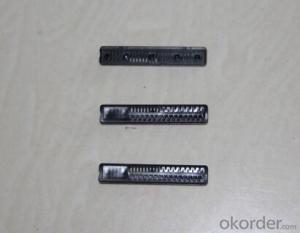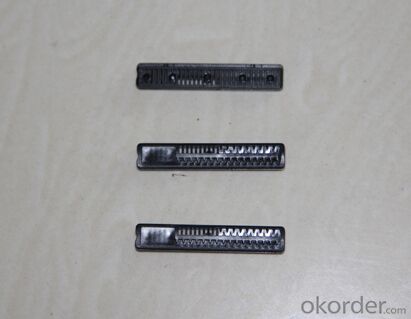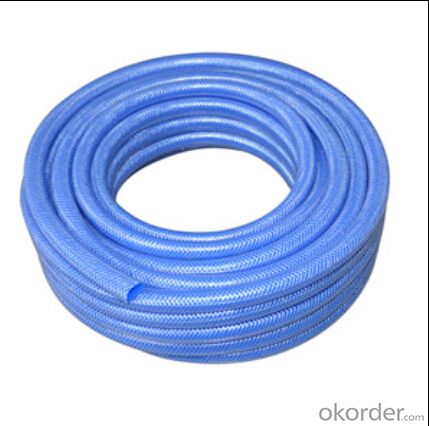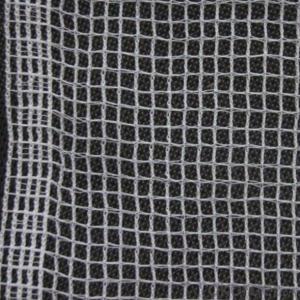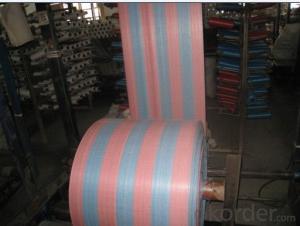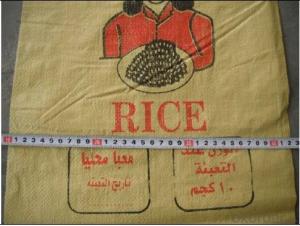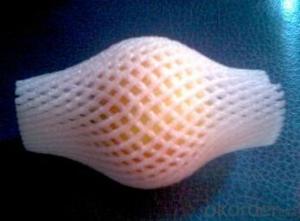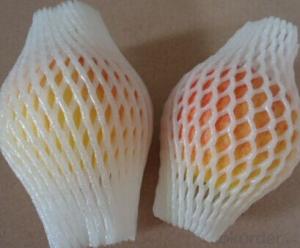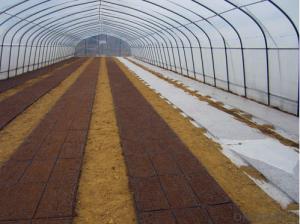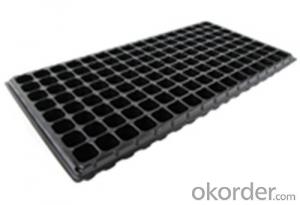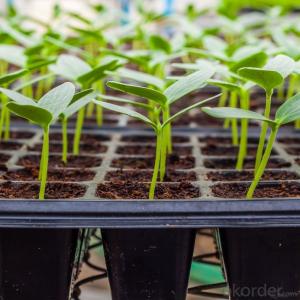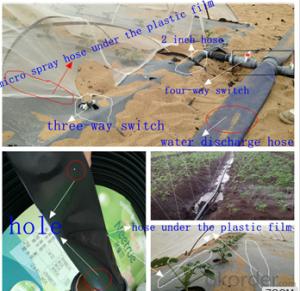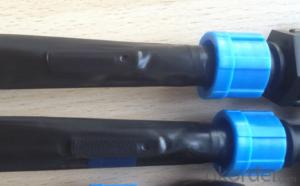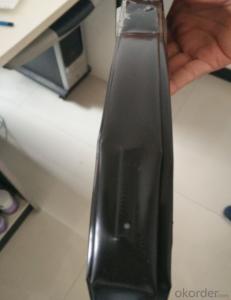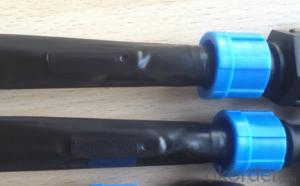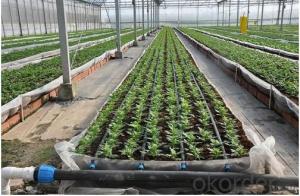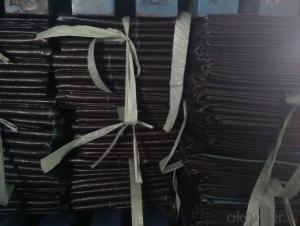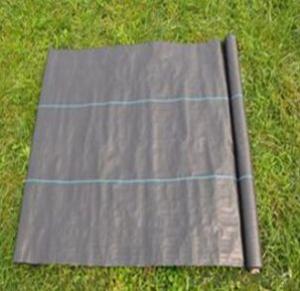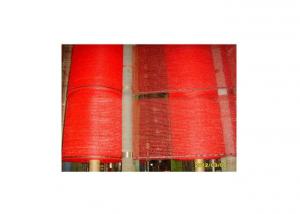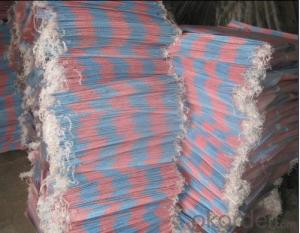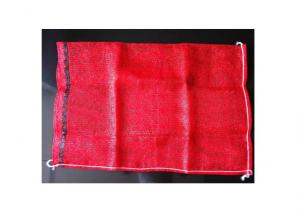Irrigation Tape distance 20CM Thickness 1.0MM
- Loading Port:
- Tianjin
- Payment Terms:
- TT OR LC
- Min Order Qty:
- 1200 m²
- Supply Capability:
- 1999999 m²/month
OKorder Service Pledge
OKorder Financial Service
You Might Also Like
The Application of new Plastic Agriculture Irrigation Pipe for Greenhouse:
The layflat hose has a wealth of residential and commercial applications, and it is usually used for general water transfer purposes as well as for submain.Generally layflat hoses are used in the industry of agriculture,in pipe lining and rehabilitation,in removing waste water,in mine dewatering ,in the chemical industry and even for household chores
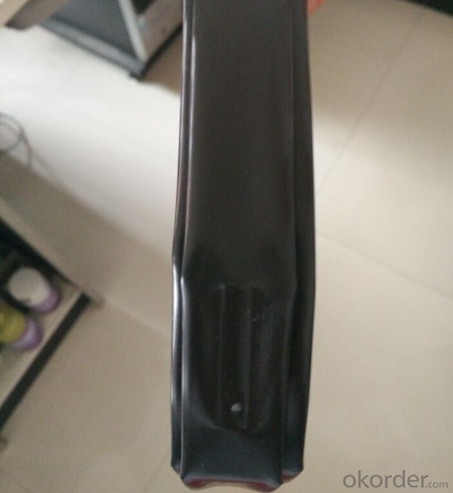
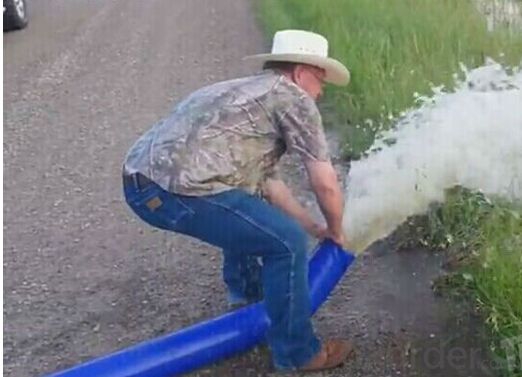
The decription of of new Plastic Agriculture Irrigation Pipe for Greenhouse:
Two layers of PVC bonded together encapsulating high tensile polyester fibers.
Thick wall dimensions and strong yarn structure help products to hold connections and resist bursting.
It assumes the conventional round appearance when pressure is being passed through it and then returns to its flat shape after use.It does not need drying and can be rolled immediately after use.
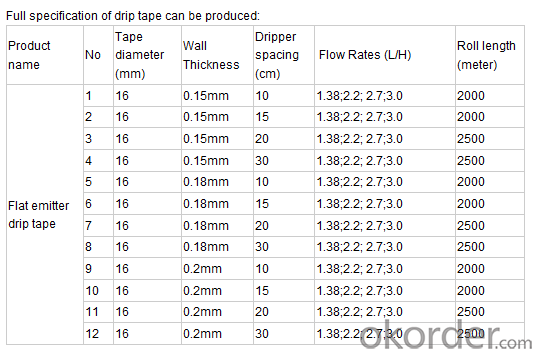
Features of of new Plastic Agriculture Irrigation Pipe for Greenhouse:
1.Great durability mainly given by the reinforcement and high-density PVC material.
2.The layflat hoses can have up to 12 inches diameter based on their applications.
3.Extra thickness are added in order to prevent bursting due to pressure in heavy industry.
4.Can be easily rolled up,stored and reused,as it has a very durable construction.
5.The hoses come with a variety of fittings and accessories ensures the water transfer process free of leaking.
6.Temperature range:-5°C~65°C(23~149F)
FAQ
1.Q:Are you manufactory or trade company?
A:We are the Manufactory specialized in drip irrigation more than 20 years; Our factory have passed IS09000.
2.Q:How can I get the samples?
A:If you need some samples to test, we can make as per your request .You should pay for the transportation freight of samples and our samples cost, while the samples cost can be refundable after you place the order if the amount meets our requirement.
3.Q:How much the transportation freight of samples?
A:The freight depends on the weight and packing size and your area.
4.Q:How long can I expect to get the sample?
A:The samples will be ready for delivery within one week. The samples will be sent via express and arrive in 7-10 days.
5.Q:Can we have our Logo or company name to be printed on your products or package?
A:Sure.Your Logo can be put on your products by Hot Stamping,Printing,Embossing,UV Coating,Silk-screen Printing or Sticker
- Q: How does agricultural plastic affect crop transpiration rates?
- Agricultural plastic can have both positive and negative effects on crop transpiration rates. On one hand, plastic mulch or covers can reduce water loss from evaporation, creating a more favorable microclimate for plants and increasing transpiration rates. On the other hand, if the plastic is not properly managed, it can hinder water infiltration into the soil, leading to reduced transpiration rates and potentially water stress for the crops. Additionally, the use of plastic can also impact the exchange of gases between the plants and the atmosphere, which can further influence transpiration rates. Overall, the effect of agricultural plastic on crop transpiration rates depends on various factors such as the type of plastic used, its management, and the specific crop and environmental conditions.
- Q: This question asks for the primary categories of plastic products used in agriculture.
- <p>The main types of agricultural plastic products include plastic films, such as mulch films and greenhouse films, plastic pipes for irrigation systems, plastic containers for planting and nursery purposes, and plastic nets for crop protection. Other significant products are silage films for food storage, plastic-coated wires for trellising, and plastic pots and trays for seedling production. These products enhance crop yield, protect against environmental stresses, and improve efficiency in agricultural practices.</p>
- Q: How do you create a visually appealing ground cover design?
- To create a visually appealing ground cover design, you need to consider various factors such as choosing the right plants, arranging them strategically, and ensuring proper maintenance. Start by selecting plants that have contrasting colors, textures, and heights to create visual interest. Consider using a mix of flowering plants, foliage plants, and grasses for a dynamic look. Arrange the plants in a way that creates visual patterns or focal points. Pay attention to the scale and balance of the design. Proper maintenance, including regular pruning, weeding, and watering, is crucial to keep the ground cover looking visually appealing.
- Q: I was thinking about buying a reusable bag for shopping. But then I think how am I going to dispose the trash, if I don’t have plastic bags from shopping? Buy more plastic bags? It’s like an unbreakable circle. Any alternatives?
- If you live in a rural area, you can compost a lot of your trash. Coffee grounds, vege/fruit scraps, non-ink paper, non-meat food stuffs. You can recycle plastic, metal, carboard and glass. This will leave very little in your trash can and reduce the amount of trash bags you use. When we go to wal-mart (yeah, I know) I ask the clerk for a few extra bags and use them in my kitchen trash. I got some good heavy fabric from wal-mart for $1.00 a yard and made 10 shopping bads. I keep a few in the car for when I go to a store other than the supermarket.
- Q: Can nursery trays be used for air layering?
- Yes, nursery trays can be used for air layering. The trays provide a convenient and organized way to propagate plants through air layering, allowing for easy monitoring and care of the rooted cuttings.
- Q: I know what it stands for, but it gets to scientific for me. Basically, my airsoft gun's frame or whatever I think is quot;ABS PLASTICquot;, what makes ABS Plastic better/worse than just casual quot;plasticquot;, and since I'm still waiting to recieve my gun, can anyone list some items that are made of ABS plastic, and they're in a regular household? Thanks a lot.
- What are the ASTM numbers relevant to ABS extruded product?
- Q: Describe several uses for plastic, and explain why plastic is a good choice for these purposes
- This is too easy to ask here. Look around your house. What is made of plastic? Make a list. First part of the problem solved. For the second part, think about the properties of plastic compared to things like wood, cloth, and paper.
- Q: How do agricultural plastic products help with temperature control?
- Agricultural plastic products help with temperature control by providing insulation and creating a greenhouse effect that traps heat, protecting crops from extreme cold temperatures. They also help regulate temperature by reflecting sunlight and reducing heat absorption, thus preventing excessive heat buildup during hot weather.
- Q: Can ground cover be used in between pavers or stepping stones?
- Yes, ground cover can be used in between pavers or stepping stones. It can help fill in the gaps, provide a soft surface, and add aesthetic appeal to the area. Additionally, ground cover can help prevent weed growth and soil erosion between the pavers or stepping stones.
- Q: This question asks about the various kinds of plastic films used in agriculture and their respective purposes.
- <p>Agricultural plastic films are used for a variety of purposes in farming. These include mulch films which help in weed control and moisture retention, greenhouse films that provide a controlled environment for plant growth, silage films for preserving forage crops, and nursery films for protecting young plants. There are also biodegradable films that decompose naturally to reduce environmental impact, and UV-stabilized films designed to withstand exposure to sunlight without breaking down. Each type of film serves a specific function, from improving crop yield to enhancing the quality of agricultural products.</p>
Send your message to us
Irrigation Tape distance 20CM Thickness 1.0MM
- Loading Port:
- Tianjin
- Payment Terms:
- TT OR LC
- Min Order Qty:
- 1200 m²
- Supply Capability:
- 1999999 m²/month
OKorder Service Pledge
OKorder Financial Service
Similar products
Hot products
Hot Searches
Related keywords
